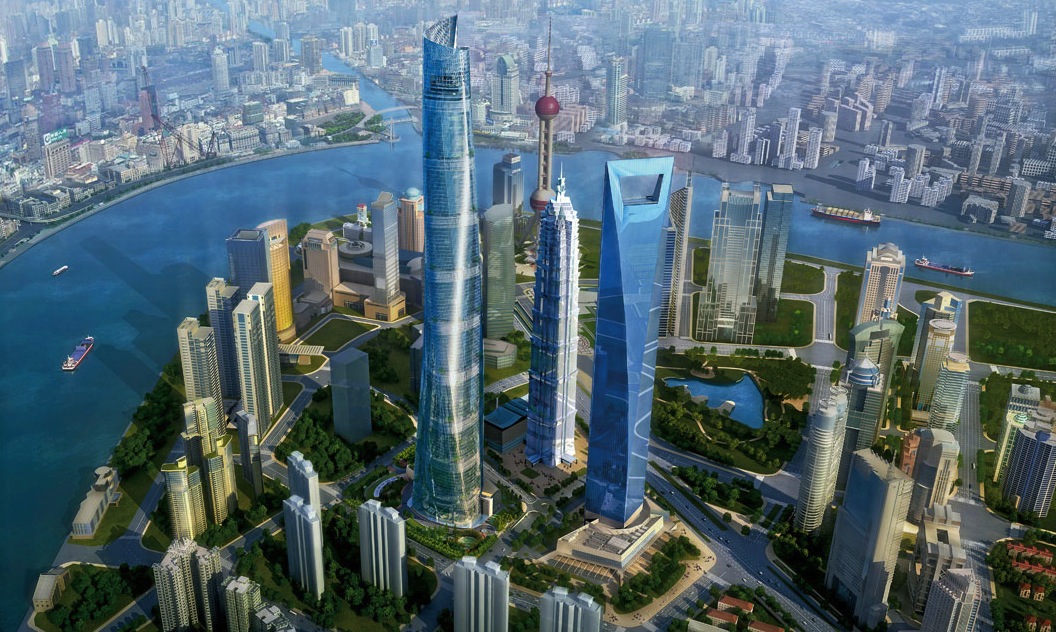Tall buildings always draw attention, and in 2015 they're only getting bigger and better. The Council on Tall Buildings and Urban Habitat has published a list of its top predictions for skyscrapers in the coming year, noting milestones on individual projects, like the highly anticipated Kingdom Tower, and larger industry trends, such as the use of wood in high-rise construction.
From Moscow to Kuala Lumpur, it looks as if 2015 will hold some major highlights for the tall buildings industry. Here are CTBUH's predictions:
1. New York’s B2 Will Be Back
A legal scuffle between contractor Skanska and developer Forest City Ratner stalled this project in 2014, but it will likely be back on track early in 2015.
2. 2015: Year of the “Woodscraper”?
More than one wood-heavy skyscraper is under construction as we move into the new year, and the U.S. Department of Agriculture will reveal the winner of the $2 million Tall Wood Building Competition.
3. Dubai’s Burj 2020 to Get Under Way
The long-awaited Burj 2020 looks to begin construction in 2015, with shortlisted engineering teams being interviewed in late 2014.
4. Re-imagined Pinnacle Will Be Revealed
The London Pinnacle, only partway finished due to the recession, has been taken on by PLP Architects. Their plans for the project should be unveiled by spring of 2015.
5. Jeddah’s Kingdom Tower Completes 22nd Floor
CTBUH predicts that the tower will complete its 22nd floor by May, with construction currently running at 2.5 floors per month.
6. Las Vegas’ Harmon Hotel Will Finally Come Down
After years of frustration and speculation, the deconstruction of this ill-fated hotel began in 2014, and is on track for completion in 2015.
7. Ping An Finance Center Will Top Out
Shenzhen's Ping An Finance Center should reach its ultimate height by mid-2015.
8. Moscow’s Federation Towers Will Be Completed
If this complex is finished in 2015, its Vostok Tower will be the tallest tower in Europe.
9. Foundation Work for Kuala Lumpur’s KL118 Completed by Q3 2015
Developer KL118 has reported that the foundation for the tower will be laid by the end of 2015's third quarter.
10. Shanghai Tower Will Be Completed
The tower and its glassed-in skygardens are set to open their doors by the end of 2015.
11. China Will Complete 13 Supertalls
Squarely ahead of any other country in this category, if China completes its scheduled 13 supertalls, it will be responsible for 57% of the world's supertall buildings in 2015.
Read CTBUH's "Watch Out for These Tall Happenings in 2015" report.
Related Stories
MFPRO+ New Projects | Oct 30, 2024
BIG’s One High Line finally reaches completion in New York City’s West Chelsea neighborhood
One High Line, a luxury residential project spanning a full city block in New York’s West Chelsea neighborhood, reached completion this summer following years of delays related to investor lawsuits.
Urban Planning | Oct 30, 2024
Bridging the gap: How early architect involvement can revolutionize a city’s capital improvement plans
Capital Improvement Plans (CIPs) typically span three to five years and outline future city projects and their costs. While they set the stage, the design and construction of these projects often extend beyond the CIP window, leading to a disconnect between the initial budget and evolving project scope. This can result in financial shortfalls, forcing cities to cut back on critical project features.
MFPRO+ New Projects | Oct 30, 2024
Luxury waterfront tower in Brooklyn features East River and Manhattan skyline views
Leasing recently began for The Dupont, a 41-story luxury rental property along the Brooklyn, N.Y., waterfront. Located within the 22-acre Greenpoint Landing, where it overlooks the newly constructed Newtown Barge Park, the high-rise features East River and Manhattan skyline views along with 20,000 sf of indoor and outdoor communal space.
Libraries | Oct 30, 2024
Reasons to reinvent the Midcentury academic library
DLR Group's Interior Design Leader Gretchen Holy, Assoc. IIDA, shares the idea that a designer's responsibility to embrace a library’s history, respect its past, and create an environment that will serve student populations for the next 100 years.
Resiliency | Oct 29, 2024
Climate change degrades buildings slowly but steadily
While natural disasters such as hurricanes and wildfires can destroy buildings in minutes, other factors exacerbated by climate change degrade buildings more slowly but still cause costly damage.
Office Buildings | Oct 29, 2024
Editorial call for Office Building project case studies
BD+C editors are looking to feature a roundup of office building projects for 2024, including office-to-residential conversions. Deadline for submission: December 6, 2024.
Healthcare Facilities | Oct 28, 2024
New surgical tower is largest addition to UNC Health campus in Chapel Hill
Construction on UNC Health’s North Carolina Surgical Hospital, the largest addition to the Chapel Hill campus since it was built in 1952, was recently completed. The seven-story, 375,000-sf structure houses 26 operating rooms, four of which are hybrid size to accommodate additional equipment and technology for newly developed procedures.
Multifamily Housing | Oct 28, 2024
A case for mid-rise: How multifamily housing can reshape our cities
Often referred to as “five-over-ones,” the mid-rise apartment type is typically comprised of five stories of apartments on top of a concrete “podium” of ground-floor retail. The main criticism of the “five-over-one” is that they are often too predictable.
Sports and Recreational Facilities | Oct 24, 2024
Stadium renovation plans unveiled for Boston’s National Women’s Soccer League
A city-owned 75-year-old stadium in Boston’s historic Franklin Park will be renovated for a new National Women’s Soccer League team. The park, designed by Fredrick Law Olmsted in the 1880s, is the home of White Stadium, which was built in 1949 and has since fallen into disrepair.
Laboratories | Oct 23, 2024
From sterile to stimulating: The rise of community-centric life sciences campuses
To distinguish their life sciences campuses, developers are partnering with architectural and design firms to reimagine life sciences facilities as vibrant, welcoming destinations. By emphasizing four key elements—wellness, collaboration, biophilic design, and community integration—they are setting their properties apart.

















